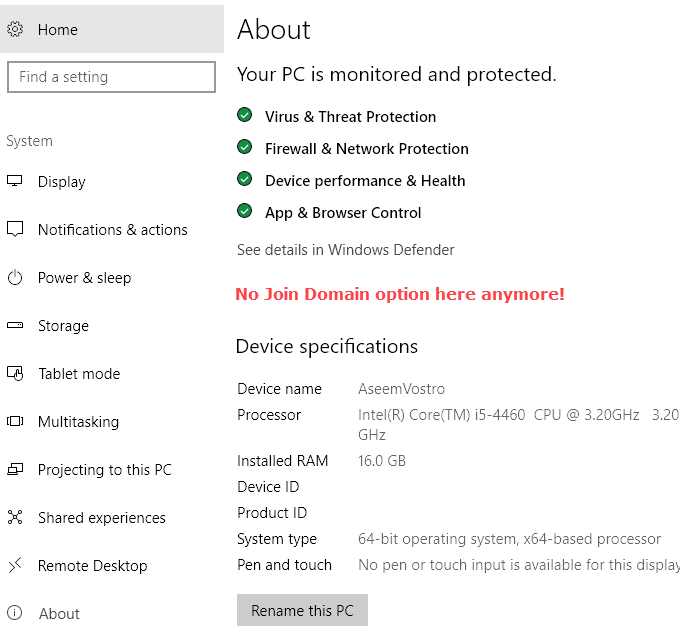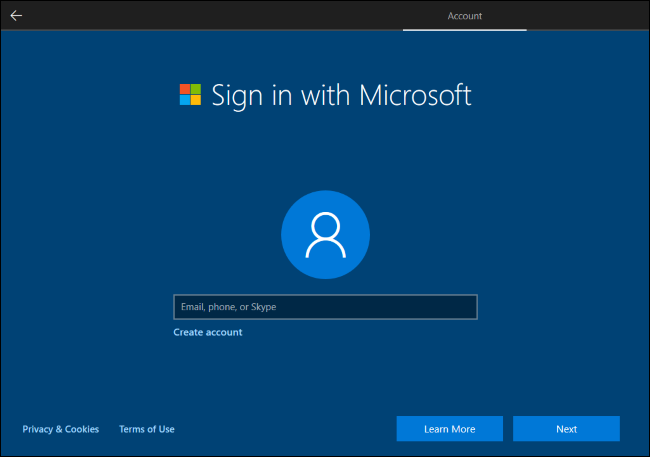
#HOW TO JOIN A DOMAIN WINDOWS 10 HOME WINDOWS#
“DNSNameResolutionRequired”=dword:00000000Īs part of the domain join process, Windows 2000 and later domains not only make a computer account for the domain but also create a DNS entry. There is no security risk here other than the kerberos-layer differences intrinsic between NT and it does not prohibit the workstation from joining an Windows 2000 domain or later domain. “DomainCompatibilityMode”=dword:00000001“īy setting this parameter, you tell your workstation that you want it to use NT4 style domains. "DNSNameResolutionRequired"=dword:00000000 Then, double-click to add it to the registry. You can manually make the changes using 'regedit' or create this as a file in notepad and save it with the '.reg' extension.
#HOW TO JOIN A DOMAIN WINDOWS 10 HOME WINDOWS 7#
It is ok for it to even be wrong so long as everything else is wrong together! Another advantage to this approach is that you don't have increased usage of your internet pipe for updates to network time.įor Windows 7 and later you will need to make changes to the workstation. Even if the central server is not able to get an accurate time from the world-view of things, it is able to keep all the nodes close by accurate. The reason why this approach is more scalable is that it works even when your external connectivity to the Internet is down. Then you can point just this central server to an external time sync device. This is by far the easiest configuration.Īnother approach is to set up ClearOS or an AD server as a network time (NTP) server and point all of the time sync for workstations and servers to this central server. One approach is to point all the workstations and servers to an external time server. Part of the security model for CIFS (Common Internet File System, the protocol used by Windows Networking) relies on the time being accurate between the workstation and the server (and also the server and other servers which is especially important when using the Active Directory Connector). It is essential that the time and date on your network is consistent throughout.

We recommend this method because it simplifies the environment. ClearOS can perform the function of a caching split-horizon DNS server if needed. The typical arguments for using a valid domain name on the LAN is that since you are using DNS on the inside of your LAN anyways, you can just use split-horizon DNS type topologies so that DNS inquiries on the LAN reveal the LAN servers in addition to external servers while external DNS queries only reveal externally configured server. ClearOS can perform the function of this DNS server if needed. This is requires that you use a DNS server on the inside of your network.


The typical arguments for the bogus domains on LAN is that if you have a bogus domain names then you can address internal resources without revealing the IP addresses used internally to the outside. There is some debate about whether it is best practice or not to have a bogus domain on your LAN while employing valid domains on the internet or whether using a valid domain across the board is best. The advantage of using a valid domain that is purchased from ClearCenter is that your boxes can tie in nicely to Dynamic DNS for ease of management and resiliency during network changes. While you can use a domain name that employs a bogus top level domain like '.local' or '.lan', you can just as easily use your valid domain that you purchased from ClearCenter or some other registrar. During the Wizard, in the section entitled 'Internet Domain', you will be asked for your Internet Domain.


 0 kommentar(er)
0 kommentar(er)
